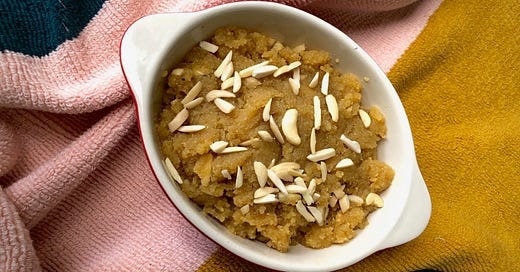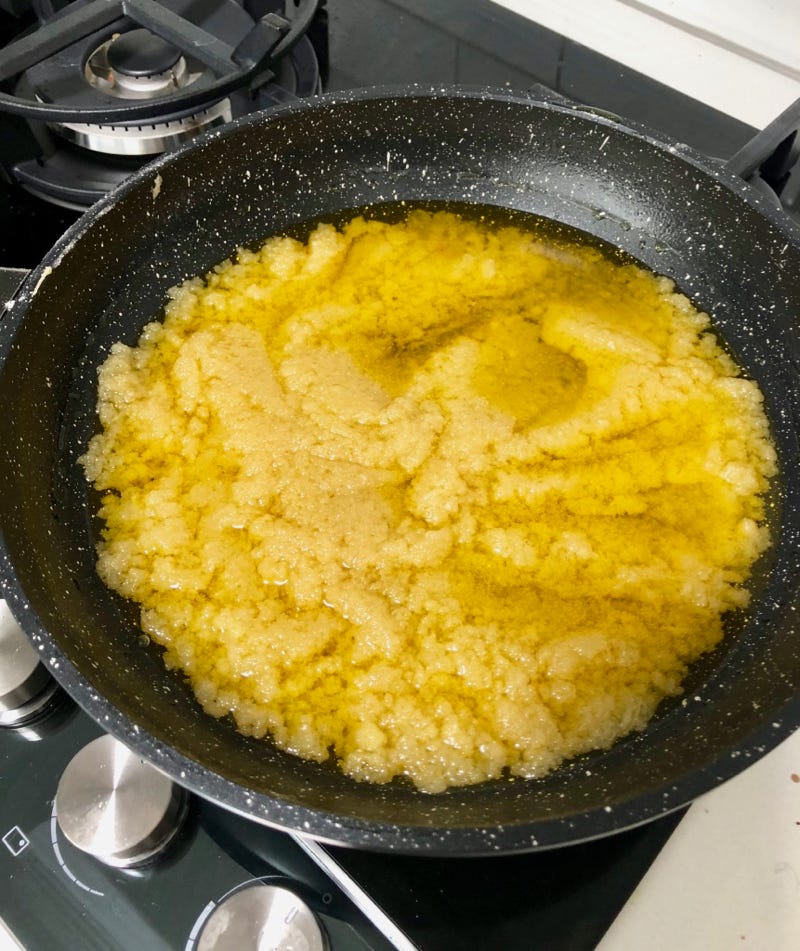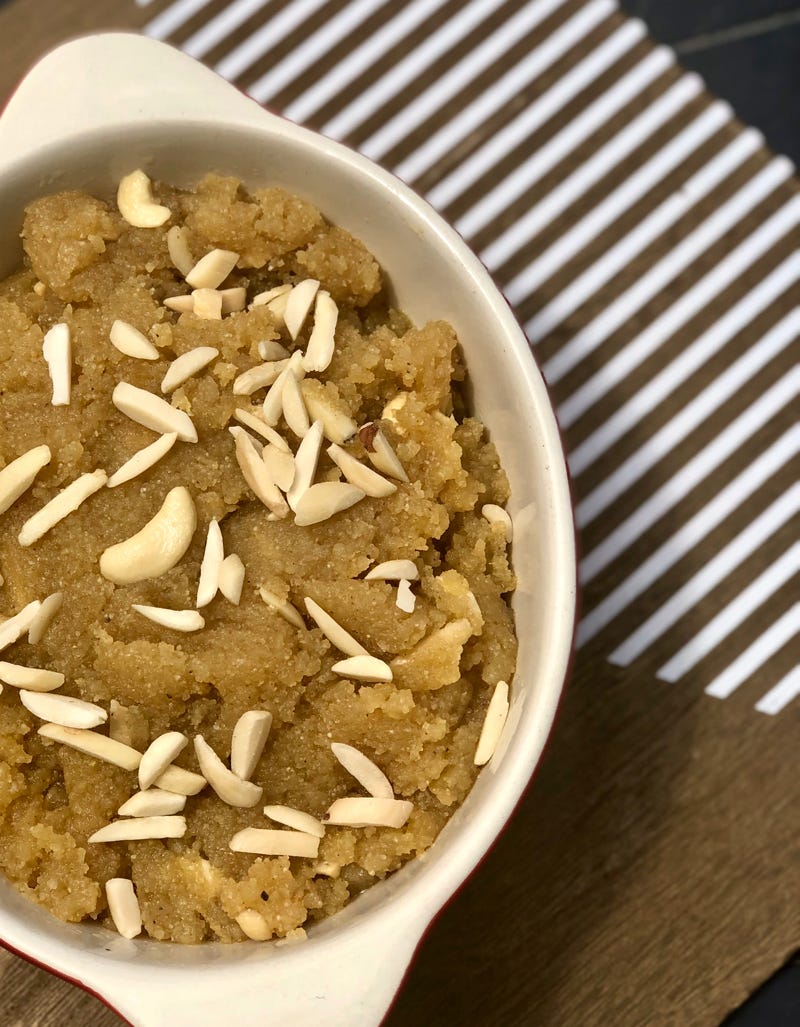Malido (wheat & ghee pudding)
A Parsi delicacy served at religious ceremonies which I wished was served pretty much every day, calories be damned
I am not sure when I first tasted Malido.
It must have been on one of my many visits to the Agiary (fire temple) as a kid. Traditionally, Malido was the domain of the local priests’ wife as it is a dessert that is served at most Parsi religious occasions like Jashan’s and also as an offering to our dearly beloved as part of their prayer ceremonies.
I remember having Malido’s that were chock full of dry fruits paired with the slightly salty Parsi flatbread called P,apri which contrasted well with the fudge sweetness of the Malido.
In today’s time, the fate of the Malido has gone the way of Vasanu and Dar ni Pori. It’s become a dish we eat only at religious occasions because the local Agiary (fire temple) still makes the best version or we simply buy it from an aunty we may know who makes it. Ofcourse, you can forget about the dried fruits now – most places just make an orange looking fudge of sorts that is a shadow of what the real Malido tastes like.
But I can understand why we keep eating it.
Because, making it at home is out of the question.
The traditional recipe requires you to combine the flours and make a dough, then you make flatbreads and fry these in the ghee, then you hand pound these flatbreads and cook it some more until you have a coarse wheat pudding. I got tired just reading all that!
A version of Malido is served as a dessert in many ethnicities, the Bohri’s call it Maleeda, the Rajasthani’s refer to it as Churma and I am sure it’s served up with a different name amongst many other Indian communities.
At the heart of it, it’s wheat flour and semolina cooked together with sugar and ghee. Ofcourse, us Parsi’s also add an egg to it because why the hell not?
When I first came across a recipe for Malido in one of the Parsi cookbooks, I did try making it. However, I can barely make roti’s so spending the time to make roti’s only to then crush them all by hand seemed like a pointless waste of time. Since then I’ve tried various versions (at least 5 or 6) only to never be able to recreate the Malido of my childhood.
Which is why, it’s been seven years since I started writing about Parsi food and there’s still no Malido recipe!
Anyways, fast forward to us moving back to New Zealand and buying our own home.
We were going to have our Jashan, and I told my mom how nice it would have been to have some Malido at our Jashan just like we would have in India.
Turns out, she knew someone who knows how to make the most amazing Malido. Mum is close friends with this aunty (the best kind of friend in my book) and so she called me a week before the housewarming to ask what she could gift us as we made this new start.
What did I ask for? Her Malido (along with the recipe, of course!)
This version still takes an hour or so to make but is nowhere near as complicated. I’m ecstatic to finally have a Malido recipe that works! Do try making it at your place and share the results with me – I’d love to see how you get on.
Ingredients
300 gram ghee
50 gram broken cashews
50 gram slivered almonds
50 gram plain flour (maida)
50 gram wheat flour
50 gram coarse semolina
200 ml milk
300 gram sugar
150 ml water
1 egg
1 tsp vanilla extract
1 tsp cardamom-nutmeg powder
For the full recipe, please consider becoming a paid subscriber.
Keep reading with a 7-day free trial
Subscribe to Beyond Butter Chicken to keep reading this post and get 7 days of free access to the full post archives.






